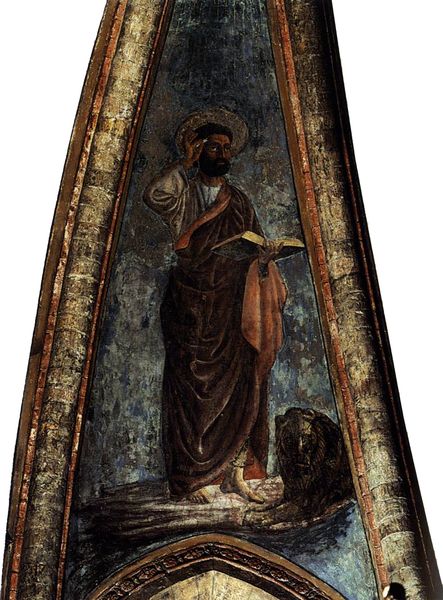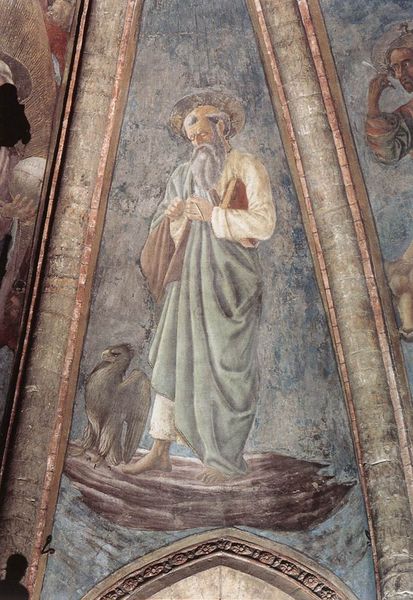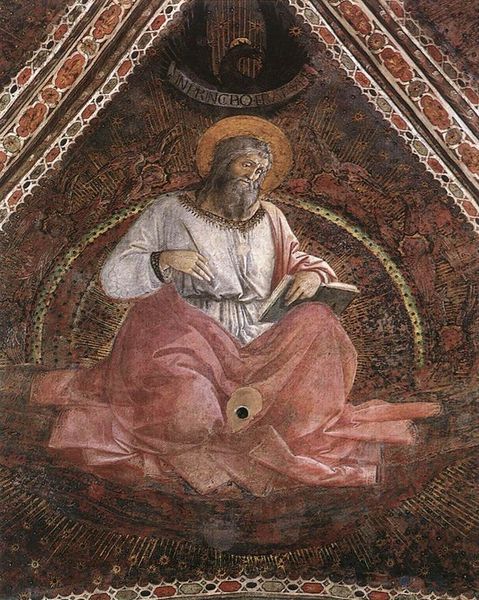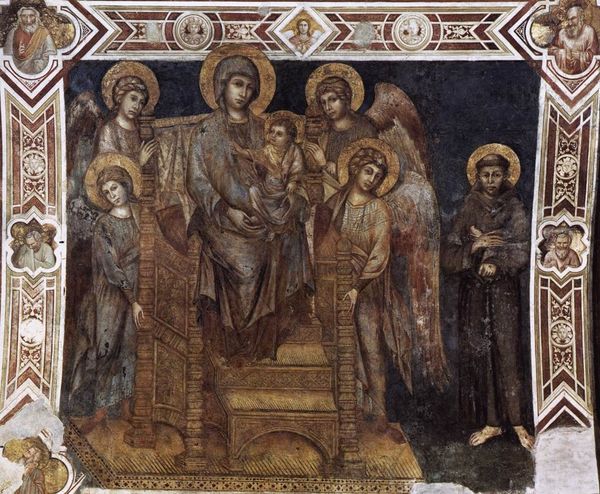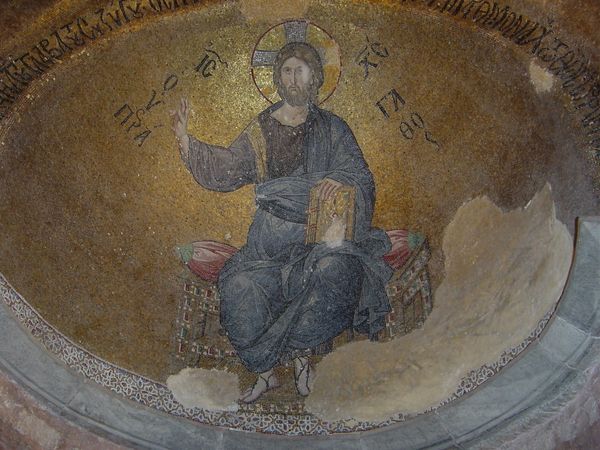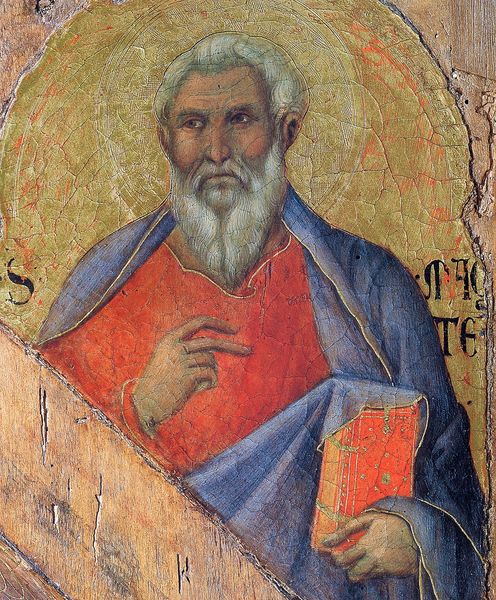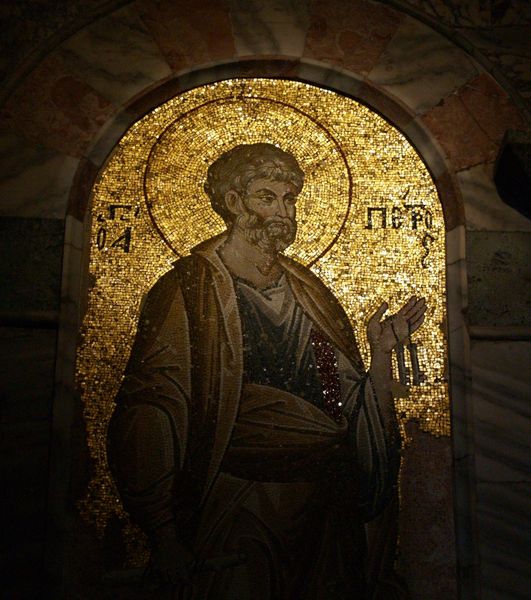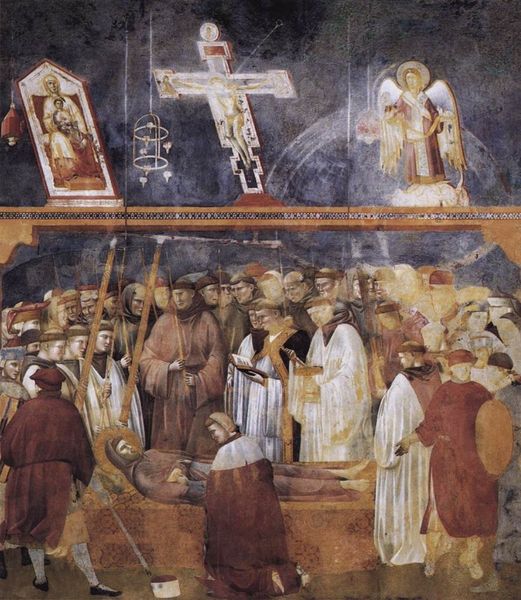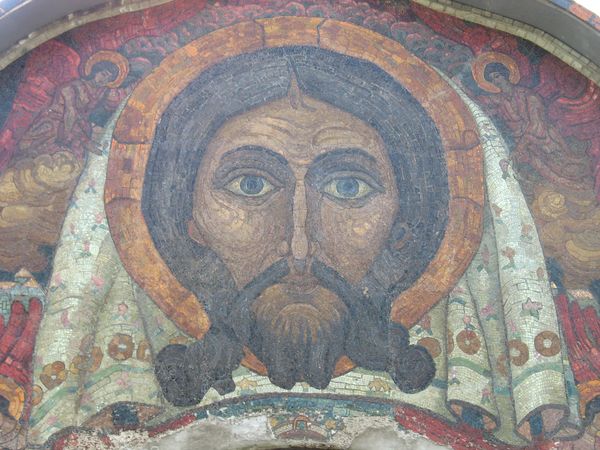
tempera, painting, fresco
#
portrait
#
tempera
#
painting
#
prophet
#
sculpture
#
holy-places
#
sculptural image
#
figuration
#
fresco
#
oil painting
#
christianity
#
history-painting
#
academic-art
#
italian-renaissance
#
early-renaissance
#
christ
Copyright: Public domain
Editor: This is "God the Father," a tempera and fresco painting created around 1442 by Andrea del Castagno. It's immediately striking – this figure is so powerful and intense, seated in this very rigid composition. What catches your eye, and how do you interpret this work? Curator: Well, imagine yourself, if you will, staring up into this cupola, back in the quatrrocento, right? Wouldn’t that be something? He looms, this God. And the almond shape that encompasses him – vesica piscis, they called it – a holy radiance. Think how powerfully that light would strike an unexpecting audience. It is really quite a spectacle. He is holding court and judgement. Can you feel that judgment too? Editor: I do see what you mean, yes, in his raised hand and direct gaze. Is the radiance symbolic too? Curator: Absolutely. The light wasn't just light, you know? It was, in so many ways, enlightenment itself. It was, like the halos, another attempt to signify His importance, His grand place in the celestial orchestra, let’s say. Even in the physical architecture and art, we are meant to find Him in the hidden spaces of plain sight. Editor: That really shines a new light, pun intended, on how much the placement adds to the experience! I hadn't quite thought of that before. Thanks! Curator: It really makes one appreciate the skill of old Andrea, eh? How can we use his wisdom today, I wonder.
Comments
No comments
Be the first to comment and join the conversation on the ultimate creative platform.
